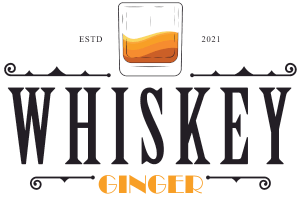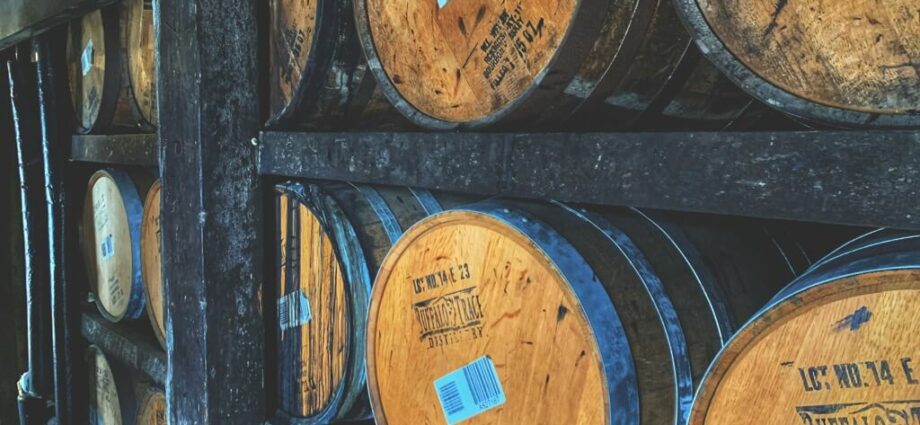Whiskey’s heritage laid the foundation for a diverse whiskey industry, with bourbon, rye, corn, and grain whiskeys being produced across the country. By the early 1900s, America had become a significant player in the whiskey world, with each region imparting its unique character to the spirits produced.
Before the 1920s, the American whiskey industry was at its zenith. Annual production soared, and whiskey became a staple in American culture. This era was characterized by a widespread appreciation for whiskey, with saloons and speakeasies becoming popular social hubs. Distilleries of all sizes contributed to a vibrant market, where consumers enjoyed a wide range of whiskey styles.
Prohibition, initiated by the 18th Amendment in 1920, dealt a crippling blow to the thriving whiskey industry. The ban on alcohol production and sales forced many distilleries to either shut down or find alternative means of survival. This period marked a significant disruption in the production and consumption of whiskey, with lasting effects on the industry.
Survival Tactics During Prohibition
During Prohibition, distilleries faced immense challenges, leading many to explore alternative business ventures. This diversification was not just a choice but a necessity for survival. Some distilleries shifted to producing non-alcoholic products like vinegar or medicinal products, leveraging their existing equipment and expertise. This strategic pivot allowed these businesses to sustain operations and retain their workforce, albeit in a different capacity.
The Industrial Alcohol Loophole
A notable survival strategy for some whiskey producers was the production of industrial alcohol. The U.S. government permitted the manufacture of alcohol for non-beverage purposes, which included uses in medicine, scientific research, and manufacturing. Distilleries that obtained licenses for industrial alcohol production were able to keep their stills running. However, this shift came with its challenges, including strict regulations and oversight, fundamentally changing the nature of their operations.
The switch to alternative production lines had significant financial implications for the whiskey industry. Distilleries that diversified often faced reduced revenues compared to their pre-prohibition whiskey sales. The financial strain was not only felt by the distilleries but also by the communities dependent on them. The loss of a thriving whiskey industry led to job losses and economic downturns in regions known for their spirit production, affecting local economies and families.
The quality of whiskey significantly declined during Prohibition. With legitimate distilleries turning to other forms of alcohol production, the market saw an influx of illicitly produced spirits. These illegal whiskeys often lacked the quality control and aging processes integral to fine whiskey production, leading to inferior and sometimes dangerous products. The inability to legally produce and age whiskey according to traditional standards meant that consumers often had to settle for lower-quality, and in some cases, hazardous alternatives.
Post-prohibition, distilleries faced the monumental task of rebuilding the whiskey industry. Returning to traditional whiskey production required not only reviving old practices but also adapting to the changed landscape. Distilleries had to reinvest in equipment, rehire skilled workers, and reestablish their brands in a market that had evolved during their absence. This period was marked by a slow but steady recovery, as the industry worked to regain its reputation for quality and craftsmanship.
The ban on alcohol led to the rise of bootlegging and organized crime. Figures like Al Capone and Lucky Luciano capitalized on the demand for whiskey, leading to a surge in illegal production and distribution. This period was marked by an increase in crime and violence, as illegal operations vied for control of the lucrative bootlegging market.
Prohibition had far-reaching economic and social consequences. The closure of distilleries led to job losses and economic downturns in regions heavily dependent on the whiskey industry. Socially, Prohibition led to a rise in illegal activities and a general disregard for the law, as many Americans continued to consume alcohol despite the ban.
Prohibition was eventually repealed in 1933, leading to a resurgence in the whiskey industry. This period saw the introduction of regulations and standards to ensure the quality of whiskey. Distilleries that survived the Prohibition era began to reopen, and new ones emerged, marking the beginning of a new era for American whiskey.
Innovations and Advances in Post-Prohibition Whiskey Production
The post-prohibition era was marked by significant innovations in whiskey production. Distilleries experimented with new aging techniques, blending methods, and flavor profiles. The introduction of charred oak barrels for aging became a standard practice, significantly enhancing the flavor and quality of whiskey.
In recent years, the American whiskey industry has seen the rise of craft distilleries. These small-scale producers focus on creating unique and high-quality spirits, often using traditional methods and local ingredients. This movement has brought diversity and innovation to the whiskey market, appealing to a new generation of whiskey enthusiasts.
American whiskey has had a significant influence on the global spirits market. Innovations in production and marketing have positioned American whiskey as a key player in the international spirits industry. This influence is evident in the growing popularity of American whiskey styles like bourbon and Tennessee whiskey in markets around the world.
Lessons Learned from Prohibition
The Prohibition era provides valuable lessons on the impact of regulations on industries. The whiskey industry’s experience during and after Prohibition highlights the importance of adaptable business strategies, the role of government in regulating industries, and the consequences of prohibitionist policies. The Prohibition era demonstrated the critical need for industries to be agile in response to regulatory changes. Whiskey producers had to quickly adapt to the new legal landscape, leading to:
-
- Diversification into new markets or products.
- Development of alternative business models.
- Strategic partnerships or collaborations to sustain operations.
Prohibition underscored the powerful influence of government policies on industry dynamics. This period highlighted:
-
- The need for a balanced approach to regulation that considers both public health and economic implications.
- The importance of engaging industry stakeholders in policy development.
- The potential for unintended consequences arising from sweeping regulatory changes.
Prohibition’s economic impact was profound, offering lessons in:
-
- The interconnectedness of industries and local economies, as the decline in whiskey production affected grain farmers, barrel makers, and local businesses.
- The risks associated with over-regulation, can drive legitimate businesses into financial hardship or illicit activities.
- The need for economic impact assessments before implementing major policy changes.
The Prohibition era fostered resilience and innovation within the whiskey industry. Key takeaways include:
-
- The importance of innovation in product development and business strategies to survive in changing markets.
- The role of resilience in overcoming significant industry challenges and emerging stronger.
- The value of preserving traditional crafts while adapting to modern demands.
Prohibition had lasting effects on consumer behavior and preferences:
-
- Shifts in consumer taste towards lighter, more mixable spirits post-Prohibition, impacting whiskey’s market share.
- The emergence of a more health-conscious and informed consumer base, leading to a demand for quality and transparency.
- The rise of underground markets and the normalization of illicit alcohol consumption during Prohibition, affected public attitudes towards alcohol regulation.
The Prohibition years brought forth a period of significant transformation and learning for the whiskey industry. This era showcased the critical importance of adaptability and strategic planning in the face of regulatory upheavals. The experience underscores how governmental policies can drastically alter market landscapes, pushing industries to innovate and diversify for survival. Post-Prohibition, the whiskey industry’s revival and evolution into a global powerhouse were marked by a return to quality production, innovative techniques, and renewed consumer interest. The enduring lessons from this era continue to resonate, offering insights into the complex interplay between regulation, industry survival, and consumer trends.

